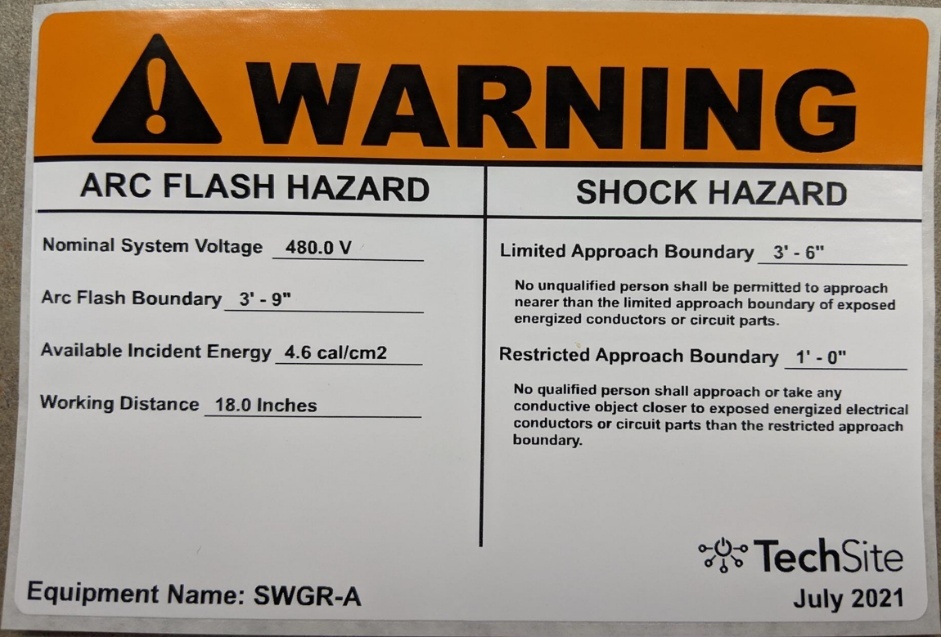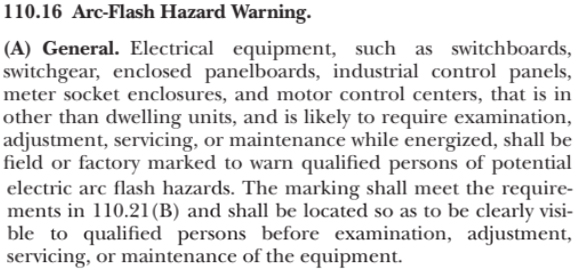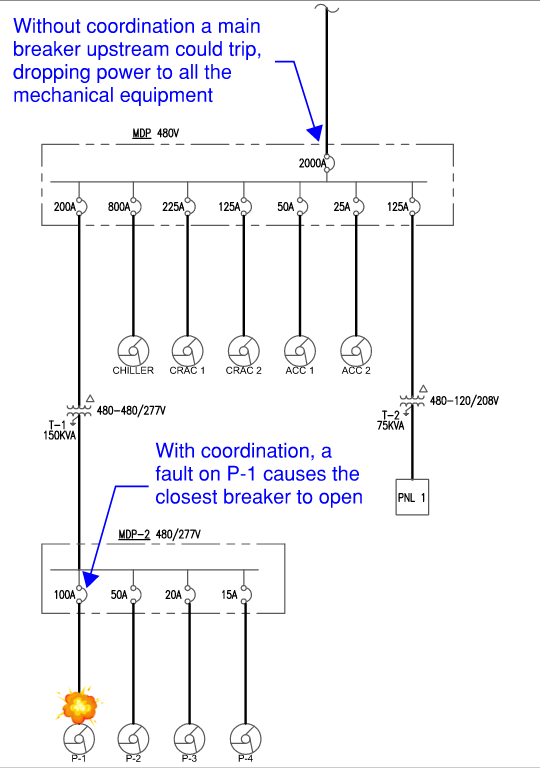What is arc flash?
An arc flash is a sudden release of electrical energy through the air, which can result in severe injury or death, as well as significant equipment damage. Performing an arc flash risk assessment and properly labelling equipment is critical in maintaining a safe data center operation.
What is an arc flash risk assessment?
An arc flash risk assessment is an engineering analysis that identifies, quantifies, and provides recommendations to mitigate the risks associated with arc flash events in electrical systems. TechSite engineers gather data from the site, and then conduct a worst-case arc flash analysis. This analysis provides the data for the creation of Arc Flash labels. These labels identify the arc flash boundary, available incident energy levels, the PPE Category for required clothing and gloves, the system nominal voltage, the limited approach boundary distance, and the restricted approach boundary distance.

Why should a data center operator care?
Did you know that the NEC 2023 requirement only calls for a generic label on the equipment warning that there are arc-flash dangers present? If no energized work is going to be done on the equipment this is all that is required. This is noted in Article 110:

However, NFPA 70E outlines the requirements for what needs to be done when work is required on energized equipment. Article 130 details the requirements for an arc-flash risk assessment to be completed to calculate the incident energy present in the equipment. Without this calculation and the arc-flash label, a technician cannot determine what level of PPE to use, and therefore cannot work on the equipment if it is energized. With safety being paramount, this could mean that your data center has to be shut down to fix what could be a minor problem.
NFPA 70E also requires that the arc flash risk assessment be updated whenever a major modification or renovation of the facility electrical distribution system takes place. The arc flash risk assessment must also be updated at intervals not to exceed 5 years to account for changes to the utility electrical distribution system that could affect the results of the arc flash risk assessment.

What about a coordination study?
The combination of an arc flash risk assessment and coordination study can create a safer situation in the facility by suggesting breaker settings that reduce the arc flash energy levels that may be present. Additionally, the coordination study provides breaker settings that increase the reliability of the system by having breakers trip closer to the location of the fault. For example, in a coordinated system, a fault in a motor would trip the breaker feeding it rather than tripping the main breaker in the mechanical panel, which could drop loads to other mechanical equipment such as CRAC units or CDUs.

Can TechSite help?
Absolutely! Not only can TechSite’s engineers perform arc flash and coordination studies, we can also print and apply all of the labels in the data center for you.
Contact us here to discuss how we can make sure your electrical systems are properly labelled and safe.
